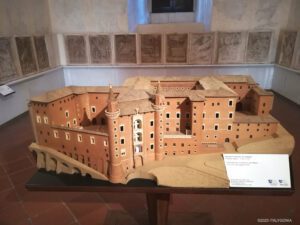The best travel experiences in Italy
Things to Do in Urbino: A Complete Guide to Italy’s Hidden Gem
Urbino is one of Italy’s most charming and historically rich cities, nestled in the Marche region, away from the typical tourist crowds. With its deep cultural heritage, stunning architecture, and artistic significance, Urbino offers a perfect destination for anyone interested in exploring Italy’s Renaissance period and beyond. This guide will walk you through all the must-do things in Urbino, from its world-famous attractions to hidden gems, helping you make the most of your visit to this remarkable town.
1. Introduction: Why Visit Urbino?
Urbino is more than just a small hilltop town; it’s a city steeped in history, art, and culture. Famous for being the birthplace of Raphael, one of the most influential artists of the Renaissance, and home to stunning Renaissance architecture, Urbino is a UNESCO World Heritage site that offers a unique glimpse into Italy’s past. Whether you are an art lover, a history buff, or just someone who appreciates beautiful scenery, Urbino has something for you.
1.1 What Makes Urbino Special?
- Rich History: Urbino was a cultural and intellectual hub during the Renaissance under the reign of the Montefeltro family, making it an essential stop for those interested in Renaissance history and art.
- Art and Architecture: The city is known for its magnificent buildings, many designed during the Renaissance period. Raphael’s birthplace, the Ducal Palace, and stunning churches and squares are just a few of the architectural wonders you’ll find here.
- Peaceful Atmosphere: Unlike Italy’s major cities, Urbino offers a quieter, more relaxed atmosphere, perfect for leisurely exploration.
2. Top Things to Do in Urbino
Whether you’re visiting for a day or staying longer, Urbino has many exciting activities to offer. Below, we dive into the must-see landmarks and experiences that should be on your list when you explore this historical gem.
2.1 Visit the Ducal Palace (Palazzo Ducale)
No visit to Urbino is complete without a stop at the Ducal Palace, one of the most iconic buildings in the city. This grand Renaissance palace was home to the Montefeltro family and remains an architectural masterpiece today.
2.1.1 Key Features of the Ducal Palace
- Galleria Nazionale delle Marche: Located within the Ducal Palace, this museum houses an incredible collection of Renaissance art, including works by Raphael, Piero della Francesca, and Giovanni Santi (Raphael’s father).
- Studiolo of Federico da Montefeltro: A small, finely decorated room within the palace, which was used by the Duke for private meetings and study. Its intricate inlaid wood panels are a true work of art.
- Beautiful Courtyards: Explore the palace’s courtyards and gardens, which offer a peaceful retreat with stunning views of the city.
2.2 Explore Raphael’s House (Casa Natale di Raffaello)
Urbino is the birthplace of the famous Renaissance artist Raphael, and his childhood home has been transformed into a museum dedicated to his life and works. The Casa Natale di Raffaello offers an excellent opportunity to learn more about the artist’s early years and the city that influenced his creative development.
2.2.1 Highlights of the House of Raphael
- Raphael’s Early Works: See some of Raphael’s early paintings and sketches on display in the house, offering insight into his artistic evolution.
- Historical Exhibits: Learn about the cultural environment in Urbino during the Renaissance and how it shaped Raphael’s career.
2.3 Stroll Through the Historic Center of Urbino
Urbino’s historic center is a perfect blend of cobblestone streets, medieval alleys, and Renaissance architecture. A leisurely walk through the heart of the city offers the opportunity to discover hidden gems, charming cafes, and local shops.
2.3.1 What to See in the Historic Center
- Piazza della Repubblica: This is the main square in Urbino, surrounded by cafes and historic buildings. It’s a great spot to relax and take in the local atmosphere.
- Corso Garibaldi: The central street of Urbino, lined with shops and beautiful architecture, leading to many key attractions like the Cathedral of Urbino.
2.4 Visit the Cathedral of Urbino (Cattedrale di Santa Maria Assunta)
The Cattedrale di Santa Maria Assunta, also known as the Urbino Cathedral, is one of the most important religious buildings in the city. Originally built in the 12th century and rebuilt after an earthquake in the 16th century, the cathedral is home to several important artworks, including an altarpiece by Piero della Francesca.
2.4.1 Features of the Cathedral
- Renaissance Art: Admire the beautiful frescoes and altarpieces that adorn the cathedral’s interior.
- Architectural Beauty: The cathedral is a stunning example of Renaissance religious architecture and is situated in the center of the historic district.
2.5 Walk Around the Albornoz Fortress (Rocca Albornoz)
The Albornoz Fortress, perched on a hilltop, offers some of the best panoramic views of Urbino and the surrounding landscape. The fortress dates back to the 14th century and was built as a military defense but today serves as a great vantage point for photos and sightseeing.
2.5.1 Highlights of the Albornoz Fortress
- Breathtaking Views: From the top of the fortress, you can enjoy sweeping views of Urbino’s rolling hills, the Marche region, and the surrounding countryside.
- Historical Exploration: Discover the history of the fortress, its role in the defense of Urbino, and its impressive architecture.
2.6 Discover the Oratorio di San Giovanni Battista
For art lovers, the Oratorio di San Giovanni Battista is a must-see. This small chapel, located near the historic center, features stunning frescoes by Lorenzo Salimbeni and Giovanni Santi, offering a glimpse into the religious art of the Renaissance period.
2.6.1 What to See at the Oratorio
- Frescoes of St. John the Baptist: The frescoes inside the oratory depict scenes from the life of St. John the Baptist, including his birth and death, as well as his relationship with Christ.
- Intimate Setting: The chapel’s small, peaceful interior offers an intimate space to admire these works of art.
2.7 Explore Urbino’s Surroundings with a Private Tour
Urbino’s surrounding countryside is just as beautiful as the town itself, with rolling hills, vineyards, and picturesque villages. For those wanting to explore beyond the city, booking a private guided tour can provide a more personalized experience. With a local guide, you can explore nearby landmarks, discover hidden gems, and gain a deeper understanding of the region’s history and culture.
2.7.1 Benefits of a Private Tour
- Tailored Experience: Private tours allow you to customize your itinerary and explore the sights that interest you most.
- Local Expertise: A guide will provide insider knowledge and stories that you won’t find in a guidebook.
3. Practical Tips for Visiting Urbino
3.1 Best Time to Visit Urbino
The best time to visit Urbino is during the spring and fall months when the weather is mild, and the city is less crowded. From April to June and September to October, Urbino offers pleasant temperatures and a peaceful atmosphere, ideal for sightseeing.
3.2 How to Get to Urbino
- By Car: Urbino is easily accessible by car from major cities like Ancona, Pesaro, and Rimini. The town is situated on a hilltop, so the drive offers stunning views of the surrounding countryside.
- By Train: Urbino doesn’t have a direct train station, but you can take a train to Pesaro or Fano and then take a bus or taxi to Urbino.
- Private Transfers: For a more comfortable and direct journey, consider booking a private transfer service. This allows you to avoid the hassle of public transport and travel in comfort.
3.3 Where to Stay in Urbino
Urbino offers a range of accommodation options, from charming bed and breakfasts to luxurious hotels. Staying within the historic center allows you to be close to major attractions, but there are also lovely countryside villas and agriturismos in the surrounding area for those looking for a more peaceful retreat.
3.4 Dining in Urbino
The Marche region is known for its delicious food, and Urbino is no exception. Be sure to try local specialties such as crescia (a type of flatbread) and brodetto (a traditional fish stew). Dining in Urbino offers a mix of casual trattorias and more upscale restaurants, many serving farm-to-table dishes made with fresh, local ingredients.
4. Conclusion
Urbino is a treasure trove of history, art, and culture, making it an ideal destination for anyone visiting Italy. From the magnificent Ducal Palace to the peaceful streets of its historic center, Urbino offers something for everyone. Whether you’re exploring its artistic heritage
, relaxing in its scenic surroundings, or discovering its Renaissance secrets, Urbino promises a rewarding and enriching experience.
Book your Urbino private tour
You might also be interested in:
Urbino, Italy: All You Must Know Before You Go
Urbino and Its Historic Center: What to See
Servizio Privato Transfer/Noleggio NCC Taxi: La Guida Completa per Viaggiare con Comfort e Stile
Guida Turistica Urbino: Scopri la Perla del Rinascimento Italiano
Cose da Fare a Urbino: Guida Completa per Scoprire la Città Rinascimentale
Le Migliori 10 Cose da Vedere a Urbino: Una Guida Completa alla Scoperta della Città
Quanto Tempo Ci Vuole per Visitare Urbino? Guida Completa alla Scoperta della Città
https://en.wikipedia.org/wiki/Urbino
https://whc.unesco.org/en/list/828/
https://edition.cnn.com/travel/article/urbino-renaissance-town-italy/index.html



